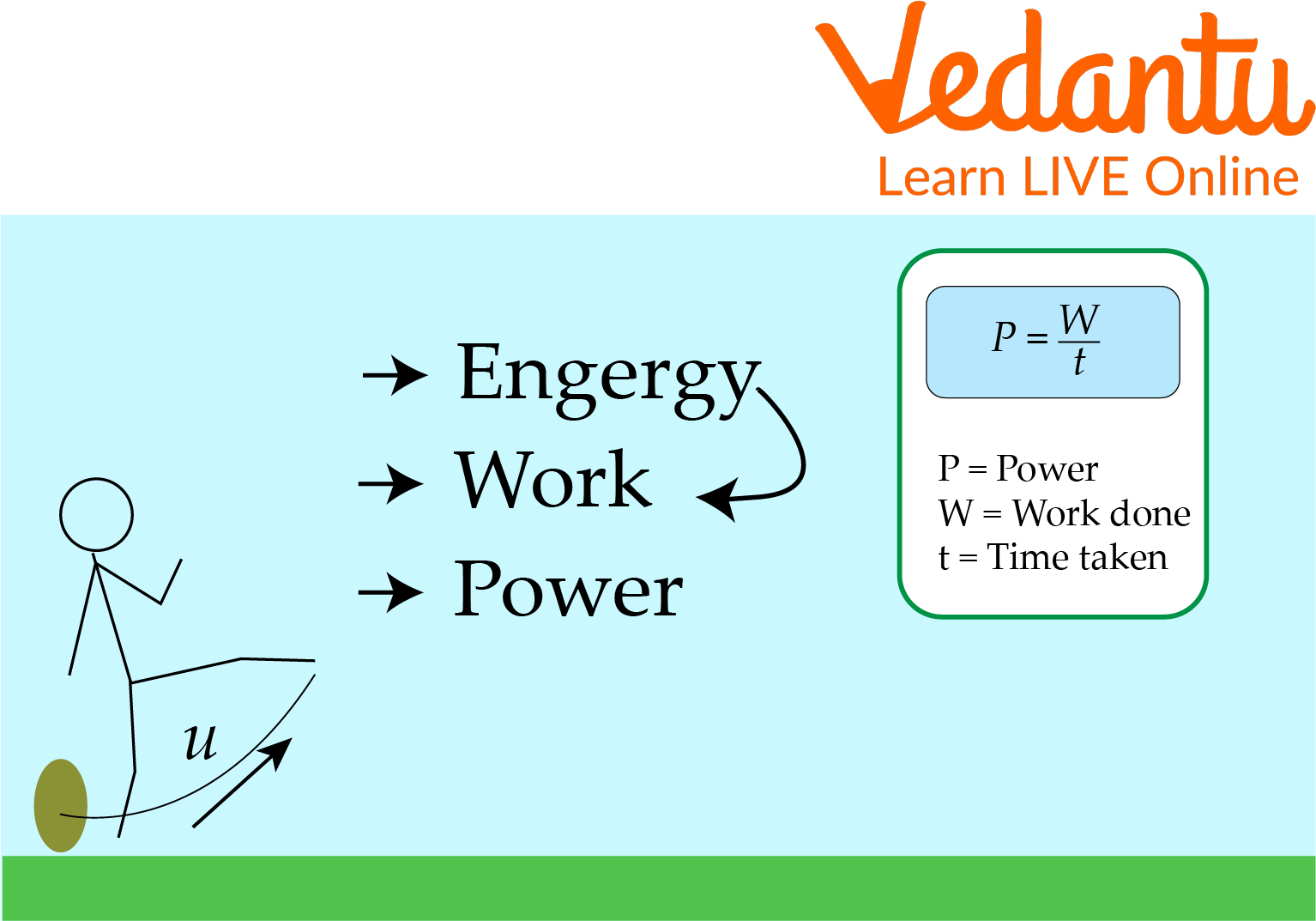




Why Understanding Power Matters in Environmental Studies
You might’ve observed that weight lifters pick up heavy mass in very little time and without that much effort because they have the power to perform such an activity. Or anything you pick up, like a pen, bottle, or book, is because you have the energy required to pick up these things.
So today, we will study what power is. Power is the rate at which an activity or task is completed in the shortest amount of time. It measures the quantity of energy that is converted or transmitted per unit of time, where a high power shows a high output of work or energy. Further, we will study some facts about power, how power is measured, average power and much more.

Weightlifters Lifting the Weight
What is Power?
Power is the measurement of the rate at which work is done. It is constantly based on the work done. It is described as the quantity of energy transformed per unit of time. One joule per second equals one watt in its International System of Units. Power is a scalar quantity. Its SI unit is named in honour of James Watt, inventor of the steam engine.
For instance, when you ride a bicycle at a fast speed, a lot of effort is required, a lot of energy is spent in a short amount of time, and you feel tired. This is because you need more power to do so than you have.
How is Power Measured?
According to the international system of units, power is expressed in watts. A watt of power is equivalent to a joule of energy expanded over a second. The following equation can determine the power:

Formula of Power
$Power=\dfrac{\text { Work}}{\text { Time}}$
$P=\dfrac{\text { W}}{\text { T}}$
The SI unit of power is Watt.
Watt is expressed as when a body does the work of one joule in one second, it is called one-watt power.
$Power=\dfrac{\text {Joule}}{\text {Second}}=Watt$
For example, Two boys are carrying fruit boxes toward their home. The first boy reaches home in 200 seconds, whereas the second boy in 100 seconds. Calculate the power of both boys if the work performed by both is 400 joules.
Solution:
The power of the first person is:
$P_1=\dfrac{\text { Work }}{\text { Time }}=\dfrac{400 \mathrm{~J}}{200 \mathrm{~S}}=2 \text { Watts }$
Power of the second person:
$P_2=\dfrac{\text { Work }}{\text { Time }}=\dfrac{400 \mathrm{~J}}{100 \mathrm{~S}}=4 \text { Watts }$
This shows that the second boy is doing the work with more power than the first boy.
What is Average Power?
Average power is the ratio of total work done in the total time.
$\mathrm{Average~power} = \dfrac{\mathrm{Total ~energy ~consumed}} {\mathrm{Total ~time ~taken}}$
$P_{a v}=\dfrac{\Delta W}{\Delta t}$
Here,
P av is average power, W is work done, and t is the time.
What is Instantaneous Power?
Instantaneous power is the amount of power used at a specific time. In electronics, instantaneous power is an important metric. It is a way to measure power. In one way, power can be measured as average power, instantaneous power is another way to measure power. It is the power at a particular moment, whereas average power is the average power used in the whole period.
P = V x I
Here, P is the instantaneous power.
V is the voltage, and I is the current.
Facts About Power
Some interesting facts about power include:
A year's worth of solar energy could power the planet for 60 minutes.
10 Google searches can power a 60-watt lamp.
A single lightning bolt releases five times more heat than by the sun.
A single wind turbine may power 1400 households.
Summary
We can sum up by saying that power is the rate at which an activity or task is completed in the shortest amount of time. It measures the quantity of energy converted or transmitted per unit of time, where a high power shows a high output of work or energy. We have learnt about power in this article; now we can also differentiate between instantaneous and average power. Power is a very important topic in Physics, and this article will be very helpful in solving problems on power in Physics.
FAQs on Facts About Power: Essential Concepts for Students
1. What is power in simple terms, with an example?
Power is the rate at which work is done or energy is transferred. In simpler terms, it measures how quickly work is performed. For example, if two people lift the same heavy box to the same height, the person who lifts it faster is demonstrating more power. The SI unit of power is the Watt (W).
2. What is the difference between a Watt and horsepower?
Both the Watt (W) and horsepower (hp) are units used to measure power. The key difference is their origin and scale. The Watt is the standard SI unit, named after the engineer James Watt. Horsepower is an older unit he created to compare the power of steam engines to that of draft horses. One mechanical horsepower is equivalent to approximately 746 Watts.
3. What is the main difference between energy and power?
The main difference is that energy is the capacity to do work, while power is the rate at which that work is done. An easy way to understand this is with an analogy: energy is the total amount of fuel in a car's tank, whereas power is how fast the car's engine can burn that fuel to move. Energy is measured in Joules, while power is measured in Joules per second, which is a Watt.
4. How is power calculated for everyday electrical appliances?
The power of an electrical appliance, also known as its wattage, is calculated using the formula P = V × I. In this formula, 'P' stands for power in Watts, 'V' is the voltage in Volts, and 'I' is the current in Amperes. This rating, often found on a sticker on the appliance, tells you how much electrical energy it consumes per second to operate.
5. What are some surprising facts about power generation?
Here are some interesting facts about how power is generated and its scale:
- A single large wind turbine can generate enough electricity to power up to 1,400 homes.
- The amount of solar energy that strikes the Earth in just one hour is more than what the entire planet consumes in a full year.
- A single lightning bolt has immense power, sometimes exceeding a billion Watts, but it lasts for only a tiny fraction of a second.
- Most power stations, whether they use coal, nuclear, or hydro, generate electricity by using a source of energy to turn a turbine, which then spins a generator.
6. What is the difference between average and instantaneous power?
The key difference lies in the time frame being measured. Average power is the total work done divided by the total time interval, giving you an overall measure of power over a period. In contrast, instantaneous power is the power measured at a single, specific moment in time. It's like comparing your average speed on a long car journey to the exact speed shown on your speedometer at one particular second.
7. Why is electrical power transmitted at very high voltages over long distances?
Electrical power is transmitted at extremely high voltages to minimise energy loss. The energy lost as heat in transmission wires is calculated by the formula P_loss = I²R, meaning the loss is proportional to the square of the current (I). By transmitting power at a very high voltage (V), the required current (I) can be kept very low for the same amount of total power (since P = VI). This significant reduction in current drastically cuts down the power lost as heat, making the transmission process much more efficient.









